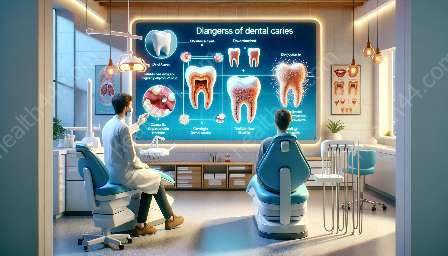People may experience difficulty chewing and eating due to various factors such as musculoskeletal problems, neurological conditions, or poor oral health. Physical therapy offers effective interventions to address these challenges and improve overall function. Let's explore how physical therapy can be beneficial and effective in improving chewing and eating abilities.
Understanding the Importance of Chewing and Eating Abilities
Chewing and eating are vital aspects of daily life that directly impact overall health and well-being. Difficulties with chewing and eating can lead to nutritional deficiencies, social and emotional challenges, and deterioration in quality of life. Moreover, poor oral health can contribute to these difficulties, leading to pain, discomfort, and impaired function.
Physical Therapy Interventions for Difficulty Chewing and Eating
Assessment and Evaluation
Physical therapists conduct a comprehensive assessment to identify the specific challenges an individual may face when chewing and eating. This evaluation may include assessing muscle strength, range of motion, coordination, posture, and overall functional ability.
Customized Exercise Programs
Based on the assessment findings, physical therapists develop personalized exercise programs to target and improve the specific deficits contributing to difficulty with chewing and eating. These exercises may focus on enhancing orofacial musculature, improving coordination, and facilitating proper swallowing patterns.
Manual Therapy Techniques
Physical therapists may utilize manual therapy techniques to address musculoskeletal issues that can affect chewing and eating abilities. This may include massage, myofascial release, and joint mobilizations to alleviate muscle tension and improve mobility in the jaw and surrounding structures.
Use of Assistive Devices
Physical therapists may recommend and teach the use of assistive devices such as oral motor tools, adaptive utensils, and specialized oral appliances to facilitate proper chewing and eating mechanics. These devices can enhance functional abilities and promote safe and efficient swallowing.
Education and Training
Patients and their caregivers receive education and training on proper chewing and swallowing techniques, oral hygiene practices, and strategies to improve oral motor function. This empowers individuals to maintain progress and optimize their ability to eat comfortably and safely.
Addressing the Effects of Poor Oral Health
Poor oral health can significantly impact chewing and eating abilities. Physical therapists work collaboratively with dental professionals to address oral health issues and minimize their impact on functional abilities. This may involve coordinating care, providing oral hygiene education, and integrating oral motor interventions to improve overall oral health and function.
Collaborative Approach and Multidisciplinary Care
Physical therapists often collaborate with speech-language pathologists, dentists, nutritionists, and other healthcare professionals to provide comprehensive care for individuals experiencing difficulty chewing and eating. This multidisciplinary approach ensures a holistic and personalized treatment plan to address the underlying factors contributing to the challenges.
Improving Quality of Life and Nutritional Status
Through targeted interventions, physical therapy aims to improve overall function, alleviate pain, enhance oral motor skills, and restore confidence in chewing and eating. By addressing these difficulties, individuals can regain independence, enjoy a wider variety of foods, and maintain adequate nutritional intake, ultimately improving their quality of life.
Conclusion
Physical therapy plays a crucial role in addressing difficulty chewing and eating by providing tailored interventions to improve orofacial function, address musculoskeletal issues, and collaborate with other healthcare professionals to optimize overall oral health. By targeting the underlying causes and utilizing evidence-based strategies, physical therapy empowers individuals to regain confidence and independence in their ability to chew and eat comfortably.



